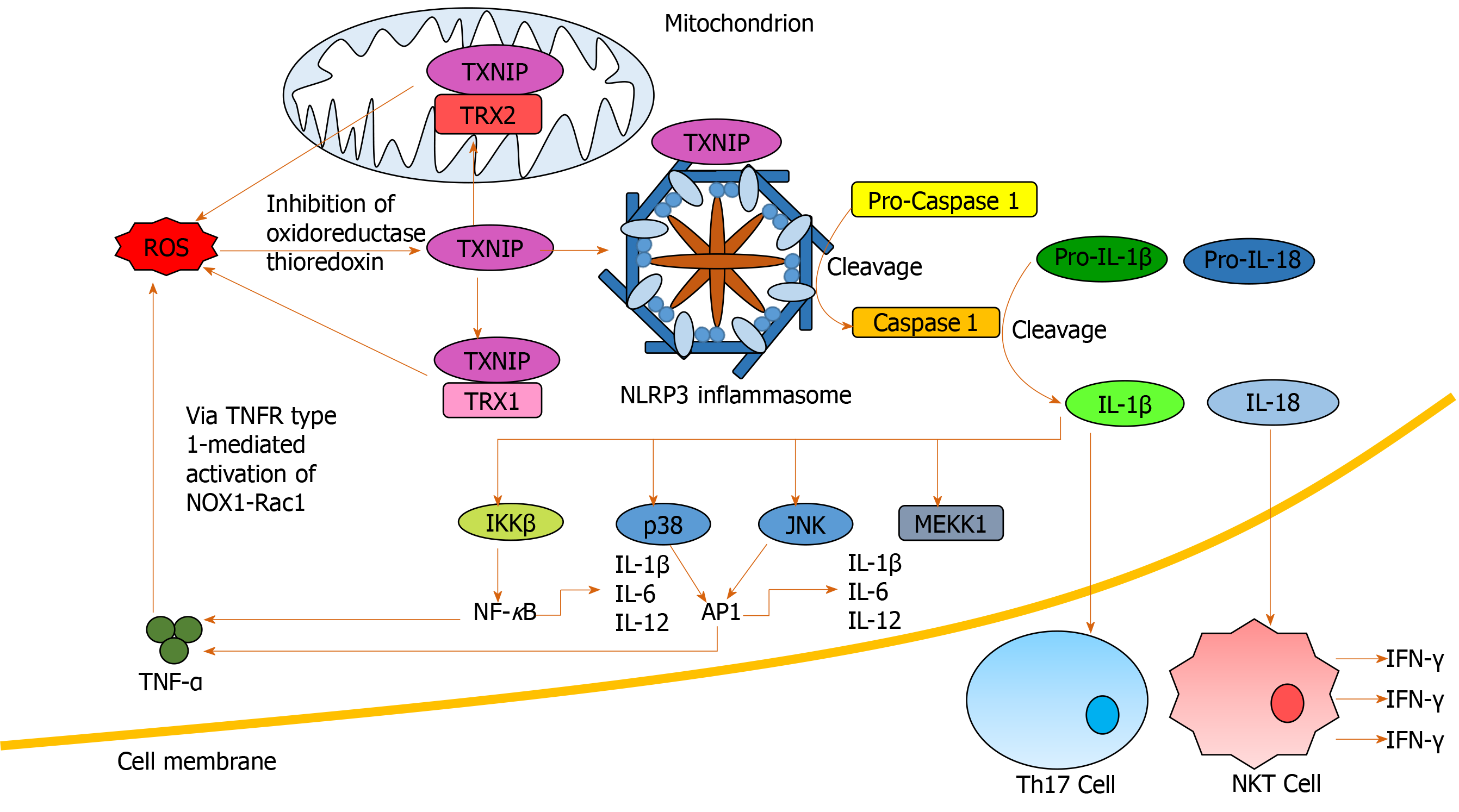Copyright
©The Author(s) 2020.
World J Hepatol. Jul 27, 2020; 12(7): 332-349
Published online Jul 27, 2020. doi: 10.4254/wjh.v12.i7.332
Published online Jul 27, 2020. doi: 10.4254/wjh.v12.i7.332
Figure 4 Nucleotide-binding domain, leucine-rich-containing family, pyrin domain-containing-3 inflammasome activation and downstream signaling.
Reactive oxygen species (ROS) activate thioredoxin-interacting protein via inhibition of oxidoreductase thioredoxin. Thioredoxin-interacting protein both binds and activates nucleotide-binding domain, leucine-rich-containing family, pyrin domain-containing-3 inflammasomes and interacts with thioredoxin 1 and 2 to indirectly promote further ROS generation through inhibiting their antioxidant activity. Activated nucleotide-binding domain, leucine-rich-containing family, pyrin domain-containing-3 inflammasomes facilitate pro-caspase 1 cleavage to caspase 1, which facilitates pro- interleukin (IL)-1β and pro-IL-18 cleavage to IL-1β and IL-18 respectively. IL-18 induces interferon-γ production by natural killer T-cells. IL-1β induces generation of T-helper 17 cells in addition to nuclear factor κB and activator protein 1 activation through IKKβ, p38, c-Jun N-terminal kinase and mitogen-activated protein kinase kinase kinase 1 stimulation. Activating nuclear factor κB and activator protein 1 results in pro-inflammatory cytokine release, indirectly inducing further ROS accumulation. AP-1: Activator protein 1; IFN: Interferon; IL: Interleukin; JNK: C-Jun N-terminal kinase; MEKK1: Mitogen-activated protein kinase kinase kinase 1; NF-κB: Nuclear factor κB; NKT: Natural killer T-cell; NLRP3: Nucleotide-binding domain, leucine-rich-containing family, pyrin domain-containing-3; NOX: NADPH oxidase; Rac1: Ras-related C3 botulinum toxin substrate 1; ROS: Reactive oxygen species; Th17: T-helper 17 cells; TNF-α: Tumour necrosis factor alpha; TNFR1: Tumour necrosis factor alpha receptor 1; TRX: Thioredoxin; TXNIP: Thioredoxin-interacting protein.
- Citation: Tan HK, Yates E, Lilly K, Dhanda AD. Oxidative stress in alcohol-related liver disease. World J Hepatol 2020; 12(7): 332-349
- URL: https://www.wjgnet.com/1948-5182/full/v12/i7/332.htm
- DOI: https://dx.doi.org/10.4254/wjh.v12.i7.332









